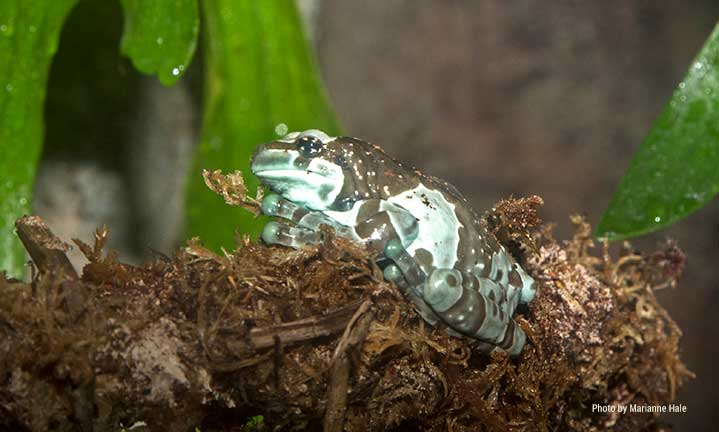Amazon milk frog
Trachycephalus resinifictrix

Fascinating Facts
- The name “milk frog” comes from the poisonous milky secretion that they emit when threatened.
- They are also known as “mission golden-eyed tree frogs.” They are threatened by deforestation and pollution.
Physical Characteristics
Amazon milk frogs have bumpy skin and large toe pads for tree climbing. They are patterned in darker and lighter shades of brownish-grey. Females grow up to 3 ½ inches in length, while males grow up to 3 inches in length. Their scientific name, “Trachycephalus” refers to their rounded snout, which they use for pushing aside vegetation to hide amongst. They have large vocal sacs and can produce a loud call.
Habitat/Diet
Amazon milk frogs are primarily arboreal and are found in the tropical rainforest canopy in Venezuela, Guyana, French Guiana, Suriname and Brazil.
Social Behavior
Males will vocalize from a water-filled tree cavity on a clear night to better carry the sound of their call. They reproduce during the rainy season, with a clutch of 2000+ gelatinous eggs laid inside a tree cavity. The tadpoles will hatch within a day. Amazon milk frogs are nocturnal.
Status In The Wild
Location in the Zoo
South American Tropical Rainforest and Aviary
